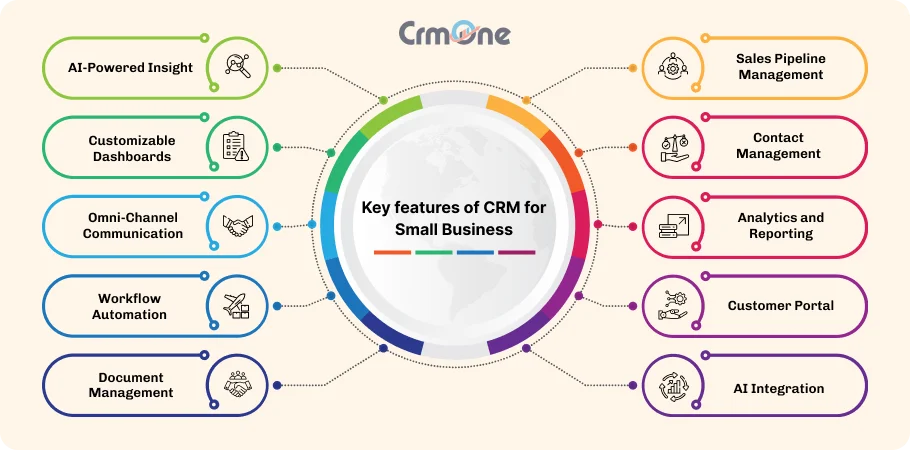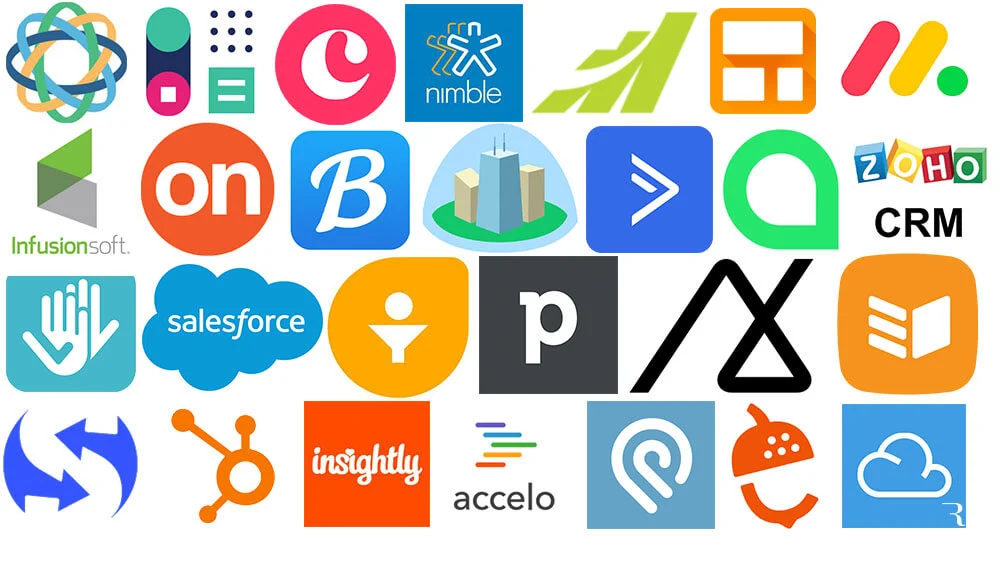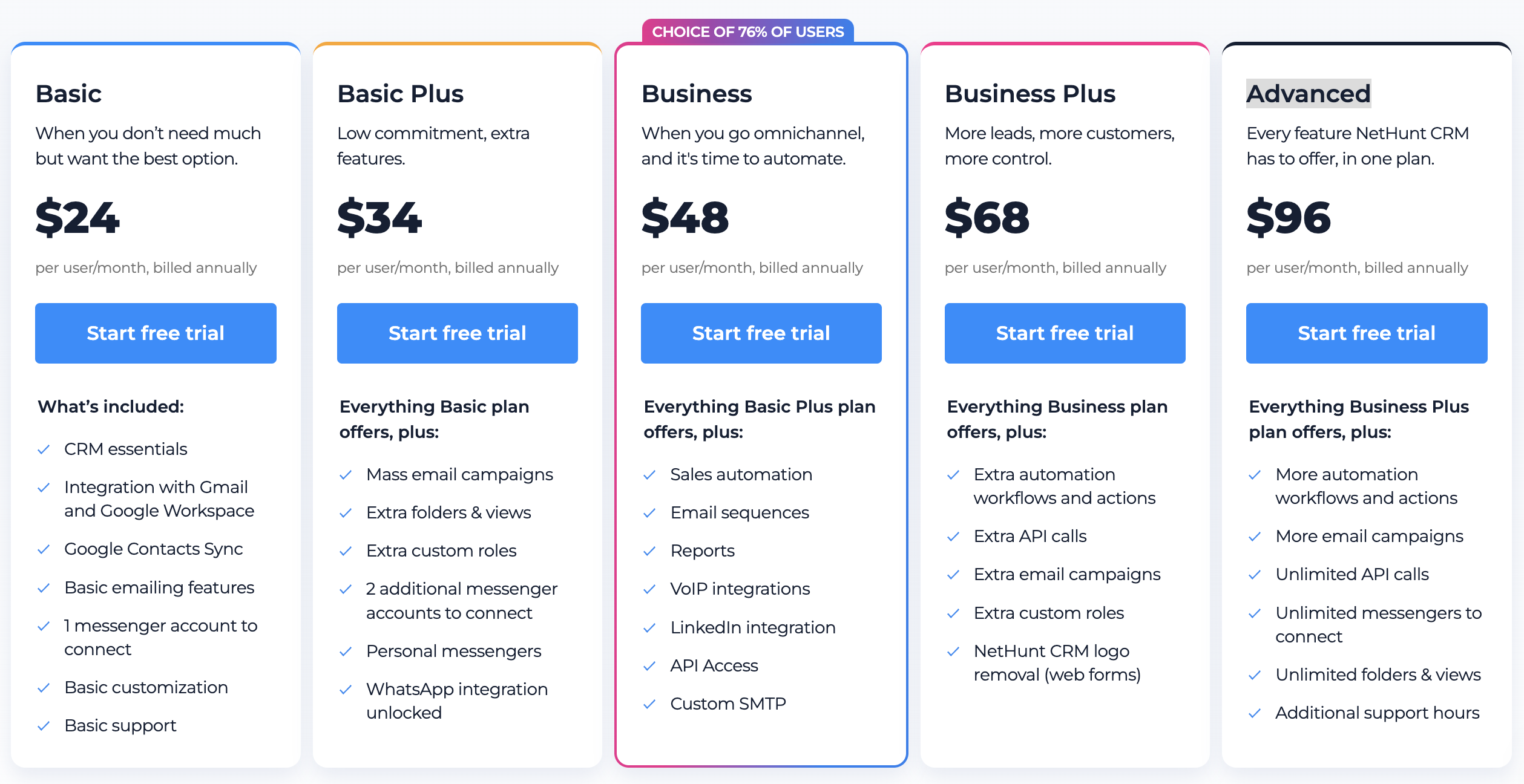
Small Business CRM Accessibility in 2025: Navigating a User-Friendly Future
The landscape of customer relationship management (CRM) is constantly evolving, and for small businesses, staying ahead of the curve is no longer a luxury but a necessity. As we look towards 2025, the focus isn’t just on features and functionalities, but on something arguably more critical: accessibility. This article delves deep into the significance of accessible CRM systems for small businesses in 2025, exploring the benefits, challenges, and practical strategies for implementation. We’ll examine how accessibility goes beyond mere compliance, shaping user experience, driving productivity, and ultimately, fostering business growth.
The Growing Importance of CRM Accessibility
Why is CRM accessibility becoming so crucial? Several factors converge to make it a pivotal consideration for small businesses:
- Inclusive Design: The world is becoming increasingly aware of the importance of inclusive design. Accessible CRM systems cater to a diverse user base, including individuals with disabilities. This commitment to inclusivity isn’t just ethical; it’s also a smart business move.
- Legal and Regulatory Landscape: Regulations surrounding digital accessibility are becoming stricter globally. Small businesses must ensure their CRM systems comply with standards like WCAG (Web Content Accessibility Guidelines) to avoid legal repercussions.
- Enhanced User Experience (UX): Accessibility features often improve the overall user experience for everyone. Features like clear navigation, intuitive interfaces, and customizable options benefit all users, leading to increased satisfaction and efficiency.
- Employee Productivity: When a CRM is accessible, employees can use it effectively, regardless of their abilities. This translates to higher productivity, reduced training time, and fewer errors.
- Wider Talent Pool: By prioritizing accessibility, small businesses can attract and retain a more diverse workforce. This includes individuals with disabilities who may have been previously excluded due to inaccessible systems.
Key Accessibility Features to Expect in 2025
What specific features should small businesses seek in a CRM system to ensure accessibility in 2025? Here’s a glimpse:
1. Screen Reader Compatibility
Screen readers are essential tools for visually impaired users. A CRM system should be fully compatible with popular screen readers like JAWS, NVDA, and VoiceOver. This means the system must provide:
- Semantic HTML: Using proper HTML tags (headings, lists, etc.) to structure content logically.
- Alternative Text for Images: Providing descriptive alt text for all images, so screen readers can convey the image’s meaning.
- Keyboard Navigation: Ensuring all features are accessible via keyboard navigation, allowing users to navigate the system without a mouse.
- Dynamic Content Updates: Properly handling dynamic content updates (e.g., notifications, form submissions) so screen readers announce the changes promptly.
2. Customizable Interface
Personalization is key. Users should be able to customize the interface to meet their individual needs. This includes:
- Font Size and Color Adjustments: Allowing users to increase font size and adjust color contrast for better readability.
- Theme Options: Offering light and dark mode options to reduce eye strain.
- Customizable Layouts: Providing options to customize the layout of dashboards and reports.
3. Speech Recognition and Voice Control
Voice control is becoming increasingly prevalent. CRM systems should integrate with speech recognition software, enabling users to:
- Navigate the System: Use voice commands to navigate through different sections of the CRM.
- Enter Data: Dictate data entry into forms and fields.
- Control Features: Activate or deactivate features using voice commands.
4. Keyboard Navigation and Shortcuts
Beyond screen reader compatibility, robust keyboard navigation is essential. The CRM should offer:
- Logical Tab Order: Ensuring a logical tab order for keyboard navigation.
- Keyboard Shortcuts: Providing keyboard shortcuts for frequently used actions.
- Focus Indicators: Clear visual indicators to show which element currently has focus.
5. Color Contrast and Visual Clarity
Good color contrast is crucial for users with low vision. The CRM should adhere to WCAG guidelines for color contrast, ensuring:
- Sufficient Contrast Ratios: Ensuring sufficient contrast between text and background colors.
- Avoidance of Color as the Only Means of Conveying Information: Using other visual cues (e.g., icons, text labels) to convey information, not just color.
- Customizable Color Schemes: Allowing users to customize the color scheme to their preferences.
6. Mobile Accessibility
With the increasing use of mobile devices, mobile accessibility is paramount. The CRM should be:
- Responsive Design: Adapting seamlessly to different screen sizes.
- Touch-Friendly Interface: Designed for easy navigation on touchscreens.
- Voice Control Integration: Integrating with voice control on mobile devices.
7. Clear and Concise Language
Using clear and concise language is critical for all users, including those with cognitive disabilities. The CRM should:
- Use Plain Language: Avoid jargon and technical terms whenever possible.
- Provide Contextual Help: Offer clear and concise help text and tooltips.
- Offer Language Options: Provide options for users to select their preferred language.
Benefits of Accessible CRM for Small Businesses
Implementing an accessible CRM system offers a multitude of benefits for small businesses:
- Improved User Experience: Accessibility features enhance the overall user experience for everyone, leading to increased satisfaction and engagement.
- Increased Productivity: Accessible systems are easier to use, leading to increased productivity and efficiency.
- Wider Market Reach: By catering to a diverse user base, small businesses can expand their market reach and attract new customers.
- Enhanced Brand Reputation: Demonstrating a commitment to accessibility enhances brand reputation and portrays the business as inclusive and socially responsible.
- Reduced Legal Risks: Compliance with accessibility standards helps small businesses avoid legal issues and potential fines.
- Improved Employee Morale: An accessible system creates a more inclusive and supportive work environment, boosting employee morale and engagement.
- Better Data Quality: When systems are easy to use, the data entered tends to be more accurate.
Challenges in Implementing Accessible CRM
While the benefits are numerous, implementing an accessible CRM system can present some challenges for small businesses:
- Cost: Accessible CRM systems may be more expensive to develop or implement.
- Technical Expertise: Designing and implementing accessible systems requires technical expertise in accessibility standards and best practices.
- Integration with Existing Systems: Integrating accessibility features with existing CRM systems can be complex.
- User Training: Training employees on how to use accessible features and navigate the system can be time-consuming.
- Lack of Awareness: Some small businesses may not be fully aware of the importance of accessibility or the available resources.
- Vendor Selection: Finding a CRM vendor that prioritizes accessibility can be challenging.
Strategies for Implementing Accessible CRM in 2025
Despite the challenges, implementing an accessible CRM system is achievable with the right strategies:
1. Choose an Accessible CRM Vendor
The most crucial step is to select a CRM vendor that prioritizes accessibility. Look for vendors that:
- Adhere to WCAG Guidelines: Ensure the vendor complies with WCAG standards.
- Provide Accessibility Statements: Review the vendor’s accessibility statements to understand their commitment.
- Offer Demo and Testing: Request a demo and test the system with assistive technologies.
- Have a Dedicated Accessibility Team: Inquire about the vendor’s accessibility team and their expertise.
2. Conduct an Accessibility Audit
Before implementing a CRM system, conduct an accessibility audit to identify potential issues and areas for improvement. This can be done using:
- Automated Testing Tools: Use tools to automatically scan the system for accessibility errors.
- Manual Testing: Conduct manual testing with users with disabilities to identify usability issues.
- User Feedback: Gather feedback from users with disabilities to identify areas for improvement.
3. Train Your Employees
Provide comprehensive training to employees on how to use the accessible features of the CRM system. This training should cover:
- Screen Reader Usage: Training on how to use screen readers to navigate the system.
- Keyboard Navigation: Training on keyboard navigation and keyboard shortcuts.
- Customization Options: Training on how to customize the interface to meet individual needs.
- Best Practices: Training on best practices for creating accessible content and data entry.
4. Develop an Accessibility Policy
Create a formal accessibility policy that outlines the business’s commitment to accessibility. This policy should include:
- Accessibility Goals: Define specific accessibility goals and objectives.
- Responsibilities: Assign responsibilities for implementing and maintaining accessibility.
- Reporting Procedures: Establish procedures for reporting and addressing accessibility issues.
- Regular Audits: Schedule regular accessibility audits to ensure compliance.
5. Provide Ongoing Support
Offer ongoing support to employees to address any accessibility issues they may encounter. This support can include:
- Help Desk Support: Provide a help desk to answer questions and resolve issues.
- Documentation: Create comprehensive documentation on how to use the accessible features.
- Feedback Mechanisms: Establish feedback mechanisms to gather user feedback and identify areas for improvement.
- Regular Updates: Update the CRM system regularly to address any accessibility issues and improve user experience.
6. Seek External Expertise
Consider seeking external expertise from accessibility consultants or specialists. They can help with:
- Accessibility Audits: Conduct comprehensive accessibility audits.
- Remediation: Help remediate accessibility issues.
- Training: Provide training on accessibility best practices.
- Compliance: Ensure compliance with accessibility standards.
Future Trends in CRM Accessibility
As we move towards 2025, several trends are poised to shape the future of CRM accessibility:
- AI-Powered Accessibility: Artificial intelligence (AI) will play a more significant role in enhancing accessibility. AI can be used to automate tasks, personalize the user experience, and provide real-time assistance to users with disabilities.
- Virtual Reality (VR) and Augmented Reality (AR): VR and AR technologies have the potential to revolutionize how people interact with CRM systems. They can create immersive and accessible user interfaces.
- Voice-Activated CRM: Voice control will become even more prevalent, enabling users to interact with CRM systems hands-free.
- Personalized Accessibility Profiles: CRM systems will offer personalized accessibility profiles, allowing users to customize their experience to meet their individual needs.
- Focus on Cognitive Accessibility: There will be an increased focus on cognitive accessibility, which aims to make systems easier to use for people with cognitive disabilities.
Conclusion: Embracing an Accessible Future
In conclusion, CRM accessibility is no longer a niche concern but a fundamental requirement for small businesses in 2025. By embracing accessibility, small businesses can create a more inclusive, productive, and user-friendly environment. This proactive approach not only benefits individuals with disabilities but also enhances the overall user experience, improves employee productivity, and strengthens the brand’s reputation. By understanding the key features, benefits, challenges, and implementation strategies, small businesses can confidently navigate the future of CRM and unlock the full potential of their customer relationships. The journey towards an accessible CRM system is a continuous process that requires ongoing effort, learning, and adaptation. However, the rewards – a more inclusive workforce, satisfied customers, and a stronger brand – are well worth the investment. Make 2025 the year your small business truly embraces an accessible future.


